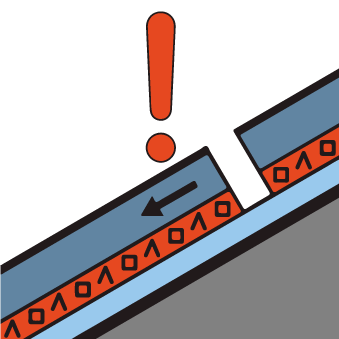
Danger level
 | treeline |
|  |
|  |

Weakly bonded old snow in particular on steep shady slopes. Distinct weak layers in the upper part of the snowpack can be released in isolated cases even by individual winter sport participants in particular on steep shady slopes. This applies in particular in little used terrain, as well as in areas where the snow cover is rather shallow above the tree line. Avalanches can penetrate even deep layers and reach a dangerous size. Distinct weak layers in the old snowpack necessitate defensive route selection. Isolated whumpfing sounds can indicate the danger.
Snowpack
The old snowpack will be prone to triggering in some places. This applies in particular on steep shady slopes above approximately 2000 m. Towards its surface, the snowpack is unfavourably layered and its surface consists of loosely bonded snow lying on a melt-freeze crust that is barely capable of bearing a load. Towards its base, the snowpack is faceted and weak. Remotely triggered avalanches are possible in isolated cases. Reports filed by observers and field observations confirm the unfavourable bonding of the snowpack on steep shady slopes. The meteorological conditions will foster a substantial weakening of the near-surface layers.
The snowpack will be prone to triggering in the northeast and in the northwest.
